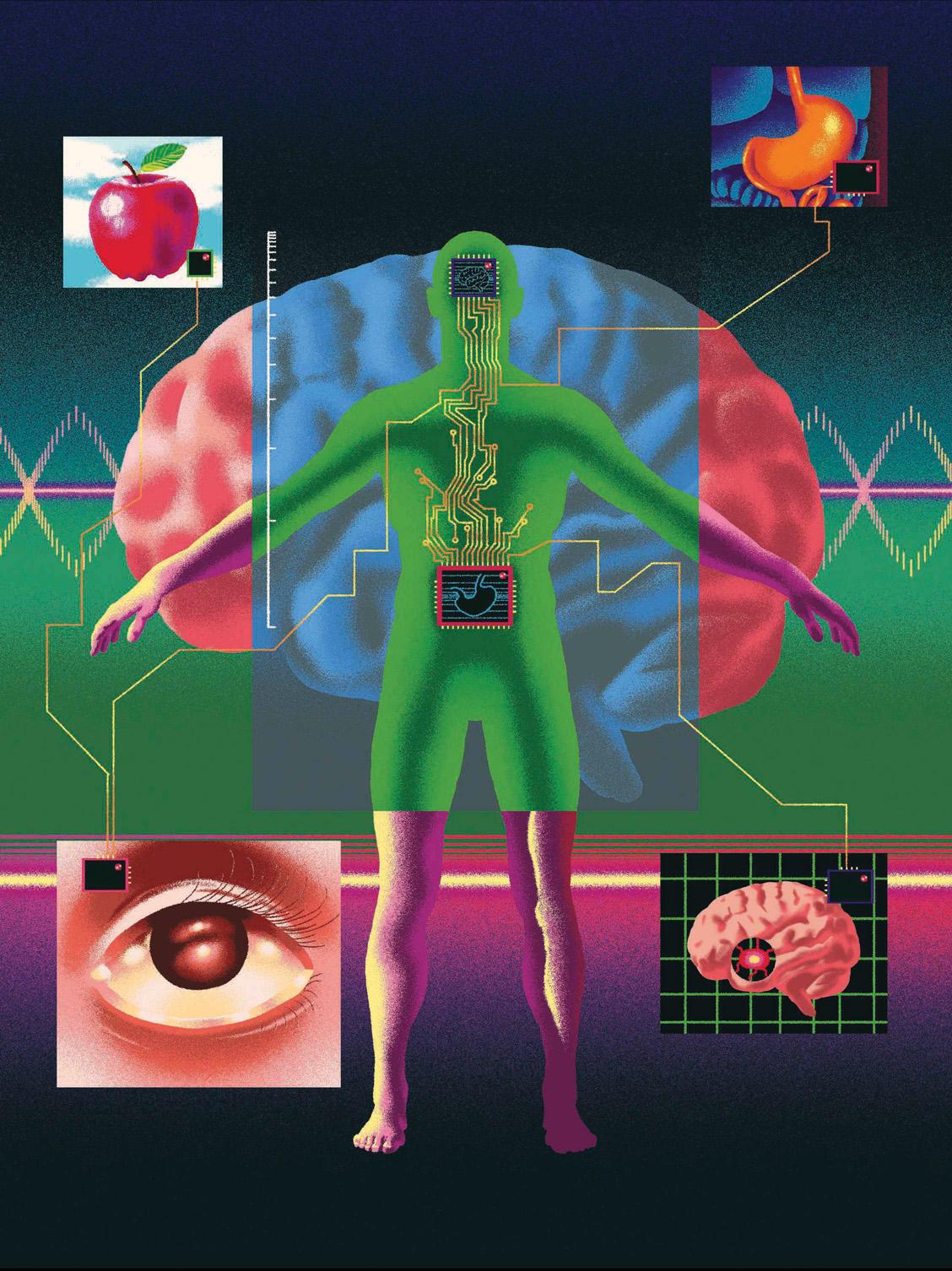Broadly speaking, your brain needs to know two things to influence appetite. First, it needs to know how much fat you’re carrying (as your long-term energy source, it’s directly related to how long you would last without food). Second, it needs to know how much you’re eating and have just eaten (these short-term energy signals are going to come from your gut).
These long-term fat and short-term gut signals come in the form of hormones secreted into your bloodstream. When they reach your brain, it senses them and influences your next interaction with a refrigerator, restaurant menu or supermarket.
The key area of the brain that acts as a ‘fuel sensor’ for these signals is the hypothalamus. Roughly the size of your thumbnail and the shape of an almond, it sits at the base of the middle of your brain.
Understanding the neuronal circuits that control appetite is another matter, though. It’s near-impossible (not to mention ethically dubious) to get into the brain of a living person, so what we know largely comes from animal models, primarily mice. But as good a model as mice are, they’re not humans.
With many current drugs targeting the hypothalamus (including the latest class of anti-obesity and diabetes drugs, such as Ozempic), enhancing our understanding of its human-specific architecture is crucial. Brain banks containing appropriate donor samples have been around for a while, but it’s only over the past few years that several important technologies have matured sufficiently to make mapping the human brain possible.
The first is called ‘single-cell transcriptomics’: the sequencing of all RNA from an individual cell. RNA acts as the messenger between DNA and protein, transcribing DNA information and translating it into proteins that perform pretty much all of the biological functions of your body.
Since DNA is the same in every cell, single-cell DNA sequencing doesn’t give us any useful information. What’s more, it’s far too difficult to identify all the proteins produced from a single cell. Sequencing the entire repertoire of RNA from a single cell, or transcriptomics, however, is easy to do. It’s relatively affordable and, crucially, produces a fingerprint that identifies the role of that cell.
The second technique is ‘spatial transcriptomics’, which is when the transcriptomic process is performed on super-thin slices of tissue. Each slice is just 10 microns thick (1 micron is 1/1,000th of a millimetre), meaning we can get more t...


